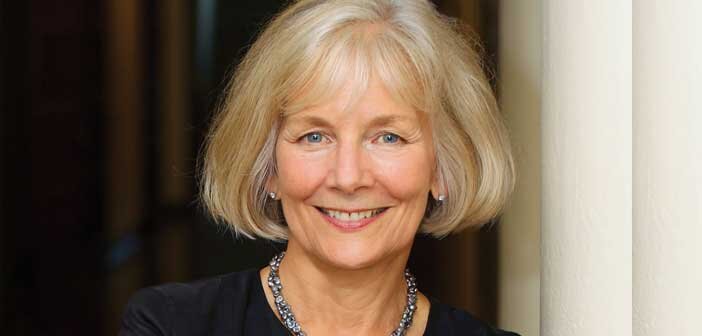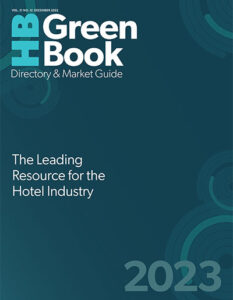Management companies are on the front lines of the hotel industry. They see firsthand the challenges and highs and lows of hospitality. Hotel Business spoke with Sara Masterson, president, Olympia Hotel Management, and Barbara J. Purvis, president, Essex Hotel Management, to get their takes on 2022, the labor challenge and their plans for 2023.
—Gregg Wallis
What has 2022 been like from your perspective?
Masterson: 2022 has been a good year. Travelers remain eager to share experiences, and leisure demand was even stronger than we expected. People have also really leaned into the remote-work environment allowing for improvement in length of stay and offsetting much of the traditional business transient, which is still not back, at higher ADRs. Even some of the primary markets like Boston and Chicago, which were initially much slower to return, had a good summer season and are showing improved stability through the winter months.
With higher rates and more spending coming from people’s vacation funds rather than corporations, guest expectations have certainly grown, and there were ongoing operating challenges, of course, with labor shortages, supply chain disruptions and inflation on cost of goods. But unlike the prior two years, there were generally more solutions available for those willing to work outside the box. And our teams were able to leverage creative skills hard earned through the pandemic to make the business work in new ways.
Purvis: Overall, it’s been a good year. By and large, we exceeded budget expectations as rates continued to outpace 2019 levels—in fact, a number of our hotels are expected to exceed not only 2019’s RevPARs, but also NOI, some by a wide margin. Occupancy levels were strong but showed signs of plateauing in recent months, as concerns about inflation and possible recession affected the travel budgets of leisure and business travelers alike. Expenses, led by labor costs, were up as a result of inflation, supply chain issues and increased demand for scarce resources, so margins were squeezed.
PIPs and major renovations took longer and cost more this year as contractor labor availability and supply chain issues created a perfect storm with schedules and budgets. What used to take six months is now taking nine months or more. Everyone has had to be more flexible, from pivoting to address an unexpected shortage or delay, to working with our hotel teams when expected completion dates get pushed out and we have to put rooms back in service temporarily for high-demand periods. We definitely are planning around longer lead times for 2023 and 2024 renovations.
How have you worked to solve the labor challenge plaguing the industry?
Masterson: We are a family-first company with a very strong culture, and as a result, our organization has always been fortunate to enjoy associate tenure well above industry average across positions. A strong core team has been critical through this period of acute staffing challenge. We have stayed focused on retention through traditional means, such as wages and benefits, but also in making sure we are true to our identity as a team. It’s why people join us and stay.
In terms of filling open roles, it’s been a potpourri of approaches. Obviously, the easy part is remaining as competitive as possible with compensation. But that really isn’t enough. We are marketing our roles, rather than posting for them, and we’re trying to draw a distinction between a job at a single property and a career with a larger company that has a broad footprint. We are also engaged with a full spectrum of groups that help connect individuals looking for work with prospective employers, including immigrant populations, veterans, second-chance workers and students. The H2B and J-1 visa programs have been critical to filling seasonal gaps as well.
Even with a full suite of recruiting and retention efforts, staffing remains a significant challenge. As an industry, we need to work hard to correct the impression of hospitality as filled with jobs that are low-paying and require long-hours. This work has started but we have a long way to go. In the meantime, we also need to support the truth of those efforts by ensuring that we prioritize our teams with wages, work-life balance and the same care and concern we show our guests.
Purvis: We should be so lucky to say that’s in the rearview mirror. The labor challenge is still an ongoing issue, and in some markets it’s worse than others. The brands’ relaxing cleaning standards was the biggest lifeline by allowing us to do less with fewer resources. We’re doing more cross-training to help fill in the gaps. In some markets we’re using more contract labor, including foreign students, but the latter often require housing accommodations, so that’s another variable (and cost) to factor in. And, of course, we’re paying higher wages in all markets (up nearly 60% in some markets compared to 2019). We’ve increased benefits for all team members, including extending PTO and holiday pay benefits to part-time staff and introduced more flexible scheduling, which has helped a little, but mostly it enables us to just stay equal to competitors, not all of which are in the hospitality business.
With some forecasters calling for a challenging 2023, how are you planning for the year?
Masterson: I think everyone’s crystal ball have become a little fuzzy over the past three years. So, we are starting the year with operating plans that reflect the best of our knowledge today and fully appreciate that we all need to be comfortable with adjustment along the way as conditions change.
We believe many of the fundamentals are still generally true going into the year—leisure is pacing well, business transient is lagging, cost of operation continues to grow. The relative sharpness of these factors varies a great deal by market and target demographic. While my crystal ball has also been pretty blurred, I don’t believe that the bottom is going to fall out of travel in 2023; I think the growth pace could slow and a change in mix may start to impact ADR, but people are excited about connection, experience and travel. They are not going to give that up in 2023.
Purvis: I’m cautiously optimistic. Industry “experts” believe even with increased inflation and a recession, the lodging segment should fare OK. But we’ve been around a long time and particularly after the past few years, we know the journey could be bumpy, so we’ll stay nimble.
We’re expecting rate and occupancy to stabilize and be similar to 2022 with less of a rate premium we’ve experienced the past couple of years. But a boost in international travel may be a welcome offset. We’re not expecting much relief on the labor side, so we’re budgeting for more pressure on margins.



